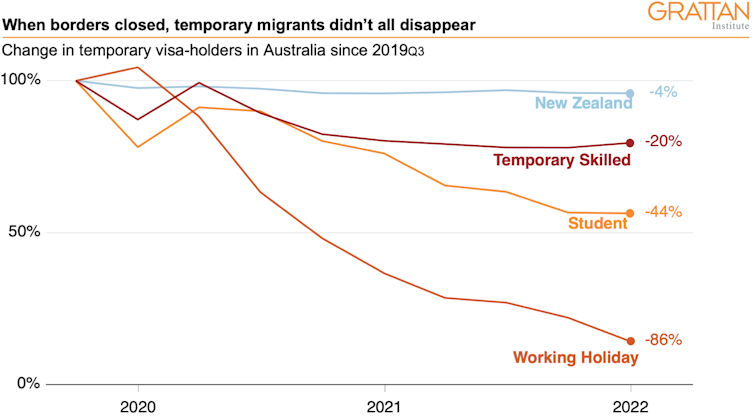Australia is missing 500,000 migrants, but we don't need visa changes to lure them back
- Written by Will Mackey, Senior Associate, Grattan Institute

COVID-19 travel restrictions brought migration to Australia to a virtual standstill, and over the course of the pandemic about 500,000 temporary migrants have left our shores. Now many Australian businesses are screaming out for more workers.
So, who are Australia’s missing migrants, where did they work, and when might they come back?
Which migrants are missing?
The Grattan Institute’s new report, Migrants in the workforce[1], shows there were about 1.5 million temporary migrants in Australia as of January 2022, compared with almost 2 million in 2019.
The 500,000 “missing migrants” are mainly international students and working holiday makers.
There are roughly 335,000 international students in Australia now – about half as many as in 2019 – and only 19,000 working holiday makers – about 85% fewer.
The number of temporary skilled workers is down by about 20%. Almost all of the 660,000 New Zealand citizens living in Australia on temporary visas remained throughout the pandemic.







